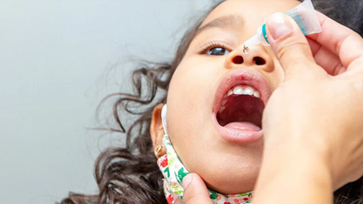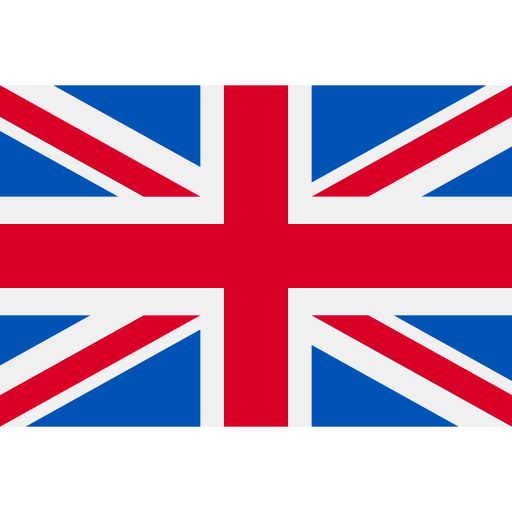World Polio Day 2021: Awareness and Perspectives in the COVID-19 era
October 24, 2021 marks the important anniversary of World Polio Day and the 33rd anniversary of the Global Polio Eradication Initiative (GPEI), conceived in 1988 by the five partners: the World Health Organization, Unicef, the US Centers for Disease Control and Prevention (CDC), Rotary International and the Bill and Melinda Gates Foundation to eradicate polio worldwide. Given the pandemic emergency, this year in particular the GPEI is commemorating the goals pursued, the awareness achieved and the future prospects with the aim of promoting the ultimate eradication of wild poliovirus strains worldwide.

The date 24 October was chosen as World Polio Day to commemorate the birth of Jonas Salk, the inventor of the polio vaccine, the only effective method of preventing the disease and its devastating consequences.
Poliomyelitis is an acute, highly contagious infectious disease caused by viruses (polio viruses, belonging to the Enterovirus genus) that affect the nervous system, involving neural cells and inducing paralysis which, in the most severe cases, can be fatal. The virus only infects humans and is transmitted faeco-orally, through the ingestion of contaminated water or food, or through saliva and droplets emitted when sick people or asymptomatic carriers cough or sneeze. Regardless of the transmission mode, the poliovirus enters the body through the mouth and multiplies in the oropharynx, tonsils, lymph nodes in the neck and gastrointestinal tract (small intestine). Human cells have specific protein receptors to which polioviruses can adhere and thus penetrate susceptible cells. The infection evolves through cycles of viral replication, leading to the destruction of infected cells. Once infection is established, polioviruses can reach the central nervous system through the blood-brain barrier, through the blood stream or through nerve fibres. Viral multiplication destroys motor neurons, which do not regenerate, leading to functional inability of the affected muscles, although in some rare cases it is possible to recover full muscle function.
Since there no drugs are known to cure this disease, the only possible defence is preventive vaccination. Thanks to mass vaccination campaigns, polio cases have fallen by 99.9% since 1988, and Italy itself was officially certified 'polio-free' on 21 June 2002 (although the last case in the country dates back to 1982).
As is well known, a number of important initiatives have long been implemented worldwide to raise awareness of the importance of quelling any existing outbreaks by sensitising institutions and the public about a disease that is all too often forgotten. However, despite the fact that the African region has recently been certified free of the wild poliovirus, polio is unfortunately continues to claim numerous victims in terms of both disability and mortality, including, with a higher incidence, children under five.
Indeed, in spite of the enormous progress of medicine in the field of vaccination, which we are witnessing now more than ever thanks to anti-SARS-Cov-2 vaccination, which has enabled the containment of the pandemic and a return to the long-awaited normality the whole world was deprived of for two long years, the reappearance of polio in polio-free countries remains a possible event, as long as there are areas of the world where the disease is present and widespread.
Although today this disease is endemic only in the following countries of the world: Pakistan, Afghanistan and Nigeria (for WPV1), Papua New Guinea (for cVDPV1) and Somalia (for cVDPV3), the persistence of epidemic outbreaks, even if localised in geographically circumscribed areas, constitutes a latent risk for the population as a whole; a risk that is considerably amplified by migration from those areas for familial, economic, cultural and social reasons in the context of the flow of displaced populations and the return of refugees.
Moreover, the restrictions imposed by the Covid-19 pandemic prior to the availability of vaccination and the persistent ethnic and religious barriers preventing polio vaccines from reaching every child, contributed to an exponential increase in cases of the disease. Indeed, in 2020 alone, 1,226 cases of all forms of polio were recorded compared to only 138 in 2018.
These numbers appear even more worrying if we consider that, as recent UNICEF data and numerous national and international scientific publications suggest, the last 18 months have seen a significant and vertiginous drop in childhood vaccination coverage: some 23 million children missed out on routine vaccinations in 2020, an increase of 3.7 million compared to 2019. One of the main reasons for this major decrease in vaccination coverage was the diversion of allocated and earmarked resources given the pressing need to combat the COVID-19 pandemic, the undisputed protagonist of the health, political, economic and social landscape of the last two years. India and Pakistan, in particular, are the two countries with the largest increase in missed childhood vaccinations, totalling 4 million doses which have not been administered.
For four months of 2020, the GPEI was also forced to suspend door-to-door polio campaigns to protect communities from the spread of COVID-19, allocating instead its economic and human resources to support the pandemic response in nearly 50 countries. Compounding the situation is the fact that most of the children deprived of the vaccine (many of whom come from communities with limited access to preventive services, often isolated from social centres and subject to increased and recurring political and social conflict) have not received a single dose of vaccination.
In this regard, low awareness and rampant Vaccine Hesitancy have hindered the progress of polio eradication especially in the two countries with the highest number of reported wild poliovirus cases: Pakistan and Afghanistan. Both countries, in fact, experienced a spike in cases during the 2020s after polio vaccination was suspended to make way for the anti-COVID-19 vaccination campaign and protect communities from the heavy burden of the pandemic.
However, as Figure 1 shows, (https://www.weforum.org/agenda/2021/10/world-polio-day-the-effect-of-covid-19-and-what-to-do-next/) when polio vaccination resumed in August 2020, both countries had the lowest number of reported polio cases in more than a decade. Therefore, the United Nations is preparing to vaccinate all children under the age of 5 in Afghanistan, including the more than 3.3 million who could not be reached as of 2018, proving once again that vaccination is the only real and tangible tool as a life-saving weapon against infectious diseases.

In order to continue along the path of these encouraging successes, Pakistan and Afghanistan have called for renewed global solidarity and the provision of the continued resources needed to eradicate this disease that is preventable solely through vaccination. These two countries have thus pledged to strengthen their partnership with GPEI to improve vaccination campaigns and engaget with communities deemed at high risk of polio.
To this end, in June 2021, GPEI launched the plan "https://www.who.int/news/item/...">Polio Eradication Strategy 2022-2026: Delivering on a Promise
The Strategic Plan 2022-2026, especially in the current context where the COVID-19 pandemic is continuing to ravage the world following 211.7 million cases and 4.43 million deaths (as of 23 August 2021), as mass vaccination campaigns have reduced the drastic mortality and morbidity rates (as of 23 August 2021, 24, 6% of the world's population was fully vaccinated, 32.7% had received at least a single dose, and 33.56 million doses were being administered on a daily basis), underlines the urgency of putting polio eradication efforts back at the forefront by proposing a comprehensive set of strategic programmes implemented with this aim.
These programmes, comprising numerous actions, many of which are ongoing in 2021, include:
-
further integrating polio activities with essential health services, including routine vaccination, and building partnerships with high-risk communities to co-design mass immunisation events and better meet their health needs, particularly with regard to the countries Pakistan and Afghanistan;
-
guaranteeing gender equality in the implementation of programme activities, recognising the importance of women workers in building community confidence and improving vaccine uptake;
-
increasing programme accountability and ownership at all levels, including improved performance measurement and engagement with new partners, such as the new Eastern Mediterranean Regional Sub-Committee on Polio Eradication and New Epidemics;
-
implementing new innovative tools, such as digital tools offered to frontline health workers, to further improve the impact and efficiency of polio campaigns.
This year's campaign will continue to use the slogan "End Polio" to support global eradication efforts, including continued vaccination against the disease and maintaining epidemiological surveillance efforts. It will also commemorate 30 years since the last case of wild poliovirus in the Americas region.
Therefore, again this year there will be many initiatives at national and local level to mark this important recurrence; among the many events the Rotary Club of Sassari has organised important initiatives held in Sassari on 23 October 2021:
- "A good coffee for a good cause: END POLIO" held from 8.00 am to 11.30 am at "Al mio Bar" Via Bardabasso 1/B

-
"A suspended coffee" held yesterday at "Accademia Caffè" Via Torre Tonda 11;

-
“A suspended coffee for Polio" held at the "Caffe Emiciclo" at the Emiciclo Garibaldi.

In this context, Vaccinarsinsardegna.org calls for informed uptake of the vaccinations and booster vaccinations laid out in the vaccination schedule, which obviously includes polio vaccination. The polio vaccination schedule in Italy calls for three doses of inactivated polio vaccine (IPV) to be administered during the first year of life, with a further two booster shots in the 6th year and between the 12th and 18th year of life.
Keep connected to our website so as not to miss future updates.







